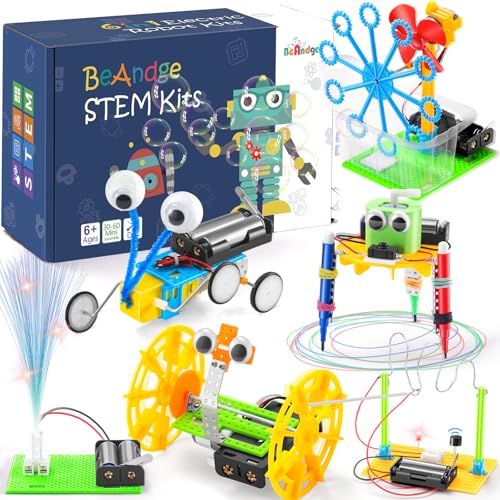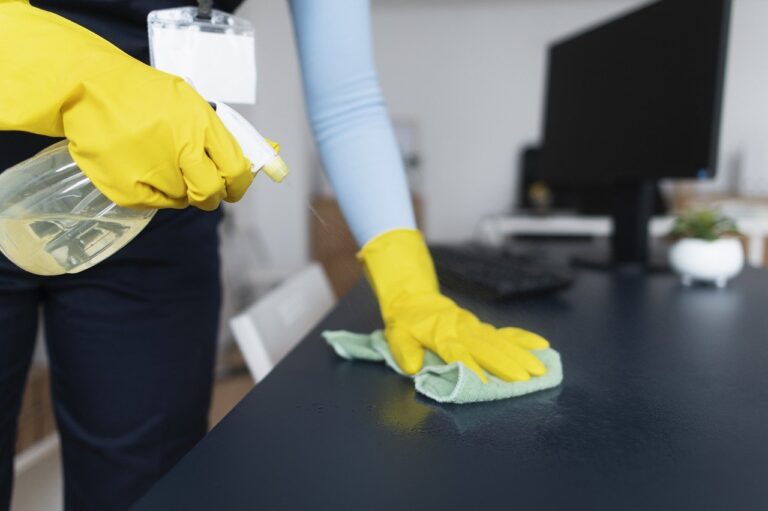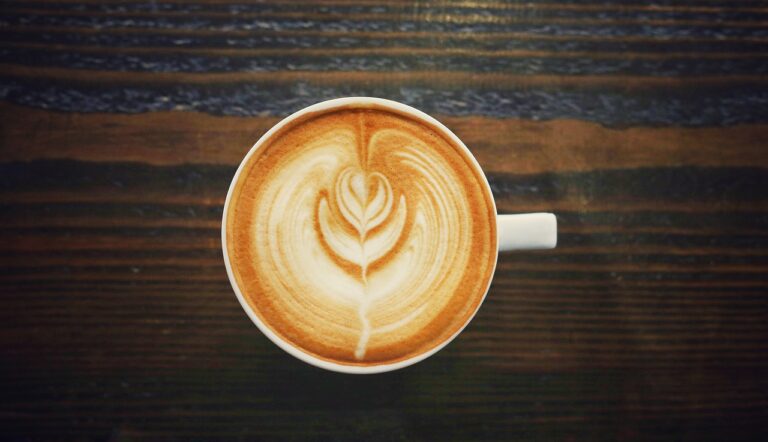Spark a Little Science Magic at Home
Turn your kitchen into a tiny lab and watch kids light up as simple household items create big, safe science moments. These six experiments are easy, messy (in the best way), educational, and totally guaranteed to spark giggles and curiosity.
What You’ll Need (Mostly Stuff from the Cupboard)
Fun and Simple Home Science Experiments for Kids with Ryan’s World
Explosive Fun: The Classic Baking Soda Volcano
Why mix these two boring ingredients? Because tiny chemistry makes the biggest mess—and the biggest smiles.Create a mini volcano using a tray, a small container (an empty water bottle works great), baking soda, and vinegar — plus some clay or playdough to shape the cone.
Build a cone around the bottle, put 2–3 tablespoons baking soda inside, add a few drops of red food coloring, then pour about ½ cup vinegar to trigger the foamy eruption. Watch the foam gush as carbon dioxide gas (from the acid-base reaction) pushes bubbles up and out.
Try these tweaks for more fun:
Do the experiment on a tray and use washable colors for easy clean-up.
Rainbow Swirls: The Magic of Milk and Soap
Looks like art—but it’s science: surface tension gets dramatic with a drop of dish soap.Pour whole milk into a shallow dish.
Add drops of different food coloring near the center.
Dip a cotton swab in dish soap and touch the colors — watch them race and swirl like a tiny tie‑dye galaxy.
Explain that surface tension (molecules sticking together) holds the color in place until the soap disrupts that stickiness. Point out how the soap grabs fat molecules, which move and carry the dye across the milk.
Try skim versus whole milk to compare motion — whole milk usually makes bigger, faster swirls because it has more fat.
Encourage kids to predict which will swirl more and record observations to practice hypothesis testing.
You’ll need:
Homemade Lava Lamp: Oil, Water, and Fizzy Magic
A living science bubble show—no electrician required. Hypnotizing and educational.Fill a clear bottle mostly with vegetable oil. Add water until there’s a little headspace. Drop in a few drops of food coloring — watch it sink into the water. Break an effervescent tablet and add a piece at a time.
Watch gas bubbles form and carry the colored water up through the oil; when the bubbles pop, the drops fall back down, just like a lava lamp. Explain density: oil floats above water because it’s lighter. Point out immiscibility: oil and water don’t mix. Describe gas formation: the tablet releases CO2 bubbles that do the lifting.
Ask kids to predict what will happen with warm vs. cold water or if you use smaller tablet pieces. Try both and compare!
You’ll need:
Dancing Raisins: Bubbles That Make Things Boogie
It’s a tiny dance party powered by fizz—who knew raisins had rhythm?Drop a few raisins into a clear glass of carbonated soda or sparkling water and watch them bob up and down — it’s like raisins doing the conga!
Carbon dioxide bubbles cling to the rough raisin surface, increasing buoyancy until the raisin floats; when the bubbles pop, the raisin sinks again.
Try these simple variations to explore the effect:
This simple demo introduces buoyancy, gas attachment, and observational recording—great for prompting questions and simple measurements like counting cycles.
Invisible Ink: Secret Messages from Lemon Juice
Spy-level cool: write secrets that reappear with a little heat. Drama + chemistry = instant intrigue.Squeeze lemon juice into a small bowl and dip a cotton swab or ballpoint pen tip to write on white paper. Let the paper dry completely — the writing will disappear (perfect for tiny spies).
Have an adult gently warm the paper over a low light bulb or a warm iron set to low, keeping the paper moving. The lemon-written parts turn brown as organic compounds in the citrus oxidize and break down.
Be careful: heat needs adult supervision. Try these variations:
Great for storytelling, history tie-ins (ancient secret inks), and careful lab safety lessons.
Balloon Rocket or Static Butterfly: Forces You Can Feel
Rockets from balloons? Or butterflies that cling to your hair—science that tickles the senses.Thread a long string through a straw, anchor the string taut across a room, inflate a balloon (don’t tie), tape it to the straw, then release—air rushing out propels the balloon along the string. Tilt the string or use bigger balloons to change speed; it’s a mini rocket race.
Cut a paper butterfly, rub a balloon on hair or a sweater, and hold it near the butterfly to make it cling and dance from static charge—watch it boogie like a tiny insect at a disco. Try heavier paper or move the balloon farther away to see changes.
Both demos show forces—thrust and Newton’s laws for rockets, and electrostatic attraction for the butterfly. Ask kids to predict outcomes, time runs, and modify variables (balloon size, string angle, paper weight).
Keep Experimenting (and Laughing)
Rotate these demos, ask open questions, and let kids tweak variables—science sticks when it’s playful. Always supervise, celebrate curiosity over correctness, and laugh at surprises together. Ready yet to turn every kitchen into a tiny, joyful lab with friends now?












Quick question: can you reuse the baking soda mixture for multiple eruptions or is it one-and-done? Want to plan an activity where each kid gets a turn.
You can reuse the ‘volcano’ structure but each eruption consumes the baking soda and vinegar reaction. If you want multiple eruptions, pre-mix small cups of baking soda that kids add one at a time, or use more baking soda and vinegar in measured amounts.
I prepped small plastic cups of baking soda and had a single vinegar bottle — each kid used a spoonful. Worked great and kept wait times low.
Tried the experiments at a birthday party — quick schedule: volcano first (messy), milk/soap next, then raisins while we had cake. Everyone was engaged the whole time. Felt like I found a secret party trick book.
Which experiment did the kids like most?
The volcano was the loudest cheer, but the milk/soap got the ‘oohs’ and ‘wows’ — different vibes.
Great idea to space them out. I did the same and had a calmer playroom afterwards.
Perfect order for energy levels and cleanup. Love that you turned it into a party routine!
The milk and soap experiment blew my mind — literally thought it was only pretty colors. My kids asked how the colors ‘move on their own’ and I fumbled for a simple explanation. Anyone have a one-liner for kids?
Nice metaphor, Sofia. Another simple line: ‘Soap changes how the milk holds color, so the colors get pushed around.’
Keep it short: ‘Soap grabs greasy stuff, colors follow, swirls happen.’ Works for my 5-year-old.
Tell them the soap is like a superhero that chases the fat in milk, so the colors run away. Kids love superhero metaphors.
Dancing raisins = magic. My kids couldn’t stop giggling as one raisin kept bouncing forever.
I used sparkling water and it was more dramatic than plain soda.
Pro tip: dry hands first when handling raisins so they sink properly.
Sparkling water is a great idea — more carbonation means more bubbles attaching to the raisin to lift it. Thanks for sharing!
Tried grapes once and they didn’t work as well. Raisins seem perfect cause of the rough surface for bubbles to grab onto.
Wanted to point out: some parents might worry about sugar or food coloring mess for the milk experiment. Suggestion: use washable dyes and keep a damp cloth nearby. Saves meltdowns.
I used paint palettes for the dye instead of bottles—less spill risk and it’s easier for tiny hands to dip.
Good call. Also non-dairy milk works similarly and may be easier to clean for some surfaces.
Made the homemade lava lamp for a rainy afternoon — turned out gorgeous. But the bottle kept fogging up after a while. Anyone else? Maybe the oil and water temps? 🤔
I put a small flashlight underneath for effect; looks like a real lamp and seems to reduce notice of fogging LOL.
Also check the oil quality — some grocery oils have additives that cloud up. I used plain canola and it stayed clear longer.
Fogging can happen if there’s condensation from temperature differences. Try using room-temperature ingredients and sealing the bottle tightly to reduce exchange with air.
Invisible ink with lemon juice was nostalgic — did this as a kid. Quick note: use a cotton swab to write thin lines, otherwise the paper chars when you heat it to reveal the message.
Great tip — thin lines heat more evenly and reveal better. Also try a light bulb or toaster oven on low with supervision instead of an open flame for safety.
Or iron on low with a piece of cloth between iron and paper — less risk than open flame.
I cranked up the stove once (bad idea) and had smoky paper. Learned the hard way 😅
Minor nitpick: the balloon rocket instructions assumed you had tape and straws, but our house was out of straws. Ended up using a chopstick and baker’s twine. Worked fine, maybe add alternatives in the tools list.
Tape alternatives: rubber bands, binder clips. If you have a bit of ingenuity, anything works!
Good idea — we’ll add suggested household substitutes like chopsticks, skewers, or twine so people aren’t stuck mid-project.
Loved the ‘Keep Experimenting (and Laughing)’ closing line. Science should feel fun, not intimidating. One tiny suggestion: include a printable checklist or scoreboard for kids to track which experiments they’ve done — gamify it!
I made a little sticker chart for my niece and she kept wanting to try all six just to get more stickers 😂
Great idea — a printable tracker or badge sheet would encourage repeat play and make it easy for parents. We’ll work on adding one.
Gamifying is genius. Kids love tangible rewards and it keeps them coming back.
Long post because I wanted to share how we extended the invisible ink activity into a whole spy day for my son. Steps below:
1) Write messages with lemon juice
2) Hide them around the house
3) Give kids flashlights and clues
4) Reveal messages together
5) Finish with a ‘science badge’ craft
They were so into it and practiced reading clues. Highly recommend for rainy weekends!
I handled the heating reveal at the end in the kitchen while another adult ran the clue hunt. Safety-first and keeps it exciting.
Love this — turning it into an immersive day is brilliant. The badge craft is a sweet ending and makes for a keepsake.
Awesome idea! We might do a spy-themed birthday with this — thanks for the steps.
Did you worry about the heat step in the middle of the scavenger hunt? How did you manage adult supervision?
Short and sweet: Loved the guide layout. Easy steps and great photos (made me brave enough to try). My 8-year-old loved making ‘secret messages’ and the lava lamp ended up in his room as decor 😂
Glad the photos helped! The lava lamp as decor is a win — just remind them not to drink it 😅
Haha my kid tried to name theirs too. Luna the Lava Lamp is now an official family member.
Balloon rocket = SO FUN. We taped a string across our living room and the kids raced them. One practical question: any ideas to keep the balloon from sliding off the straw?
If you loop the string through a second straw and attach them, it keeps alignment better — less wobble.
Thanks y’all! Will try the paper clip trick tonight.
We tied a little paper clip to the end of the string as a stopper for the straw. Worked surprisingly well.
Tie a small knot at the straw’s end or use a little loop of tape to create a stop. Also twist the balloon neck around the straw once before letting go.
Tried the baking soda volcano with my 6-year-old — total hit! We used food coloring and it looked like a tiny apocalypse 😂
Quick tip: put a tray under it or you’ll be scrubbing the table for hours.
Also, the recipe measured in cups was perfect for us.
We added a bit of dish soap and got foamier eruptions. Less splatter too.
So glad it worked! Trays or old cookie sheets are lifesavers — and you can reuse the mixture for more eruptions with a little extra vinegar.
Haha love the ‘tiny apocalypse’ line. I let my toddler pour the vinegar and basically cried-laughed at the mess.
Constructive: the safety section could be more prominent. Maybe a checklist at the top — goggles, adult supervision, heat safety for the lemon juice reveal. I almost missed the safety tips until the end.
Thanks! And I appreciate the clear steps otherwise — just wanted safety to be unavoidable.
Great feedback — a top-of-article safety checklist is a smart addition. We’ll update the guide to make it clearer.
Agree. Also a quick note about food allergies for some soaps or oils could help — better safe than sorry.